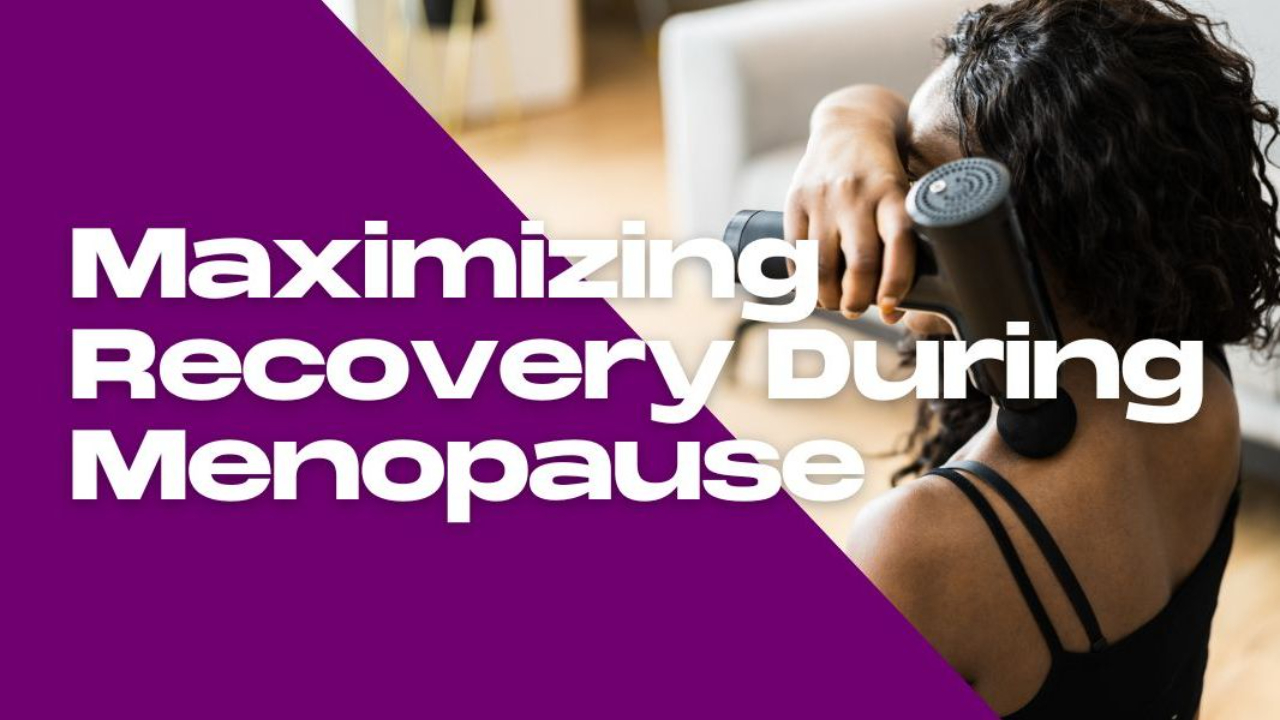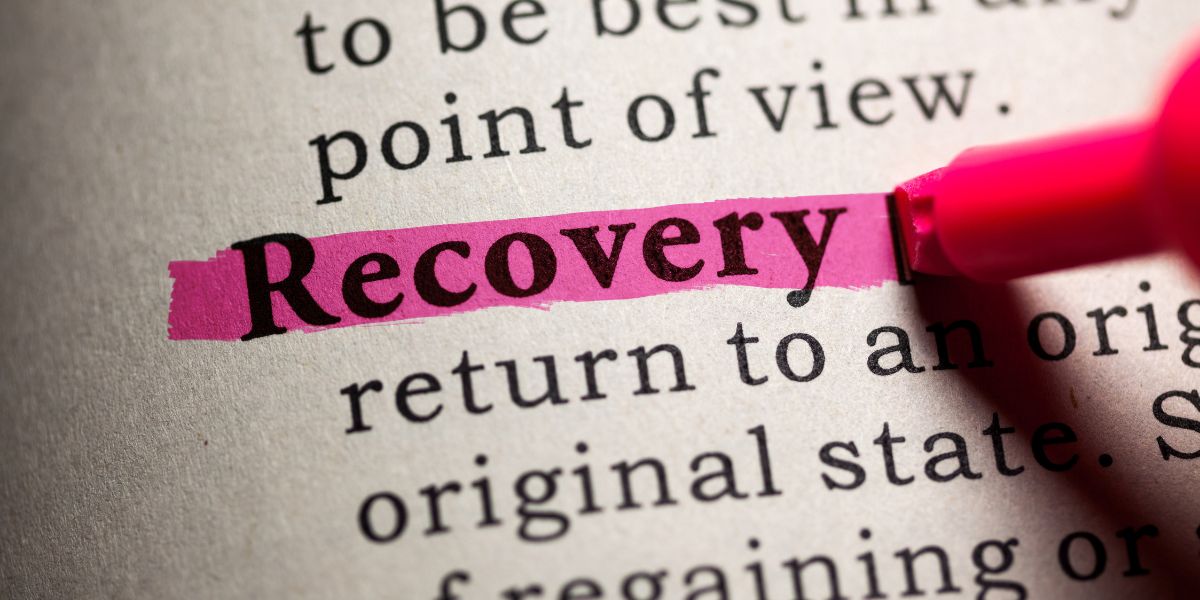
Maximizing Recovery During Menopause
May 02, 2023Training only works if you let your body absorb it and bounce back. Here’s how to channel your inner superball.
By Selene Yeager
Hard training bouts are designed to stress your body. They empty out your glycogen stores. They create micro-tears in your muscles. They tax your cardiovascular and central nervous system. They make your body go, “Woah, what is she trying to do to us?!” as it puts all systems into overdrive to get the job done.
Recovery is when your body calls in the clean-up and repair crews to shuttle out the metabolic waste, patch up those tiny tears, restock your fuel stores, and generally recharge and rebuild so you can hit it again even harder next time.
With age and the hormonal changes that come with menopause, that recovery process becomes even more important because those repair crews work a little slower and have less of the hormonal support to do their jobs. (This is true whether or not you are using hormone therapy, as it doesn’t reproduce your premenopausal hormone environment.) Here’s how to assist that process to maximize your recovery during and beyond the menopause transition.
Warm Up & Cool Down
Set yourself up for a strong recovery by starting and finishing your workouts on the right foot. Warming up, which is as simple as doing whatever activity you’re heading out for at a lower intensity—power walking before running; easy spinning before cycling; lifting easy weights before adding plates—is essential to get the blood flowing, lubricate joints, and warm muscles. This helps recovery by minimizing stress on the body. It also improves performance by up to 79 percent, and helps prevent injury.
The research around cooling down is more equivocal with some research suggesting that the benefits have been oversold. That said, cooling down appears to help promote faster recovery of your cardiorespiratory system. Cooling down may be more important for menopausal women because our blood vessels are slower to expand when we start working out (i.e., that warm-up matters) and to shrink back to normal post-exercise, which can leave blood pooling in your extremities if you don’t cool down. Cooling down may also help lower cortisol levels after a hard workout, which is especially good for menopausal women who can have a harder time managing the stress hormone. (Cortisol in itself helps with exercise, left unchecked it can contribute to elevated blood sugar, fat gain, and other issues.)
Fuel the Repair Crew
Eating enough protein will help make, repair, and maintain muscle. You don’t store protein like you do carbs, so aim for 25 to 30 grams of protein three or four times a day. If you have a hard workout on tap, time your protein so you have one of those doses after you’re done to stop muscle breakdown, lower cortisol, and stimulate muscle protein synthesis.
Fueling your workouts with carbohydrates also helps reduce the cortisol response to exercise. Plus, you perform better and can hit those higher intensities when properly fueled.

Cold Plunges
Research is a bit mixed on the use of cold baths and plunges for muscle recovery specifically. One meta-analysis found that cold water immersion was a highly effective tool after high-intensity exercise, improving muscular power, muscle soreness, perceived recovery, and levels of circulating creatine kinases (CK), which is a marker that indirectly implies muscle damage following strenuous exercise. Research also shows that cooling the body after training with cold water helps lower post-training cortisol levels. Cold water plunges can help with recovery by pushing blood from the extremities back into circulation. They also help cool you down (I know, obvious), which is also beneficial for menopausal women who have more trouble with thermoregulation. On the flip side, research suggests that while cold immersion can reduce muscle soreness, it also may blunt muscle gains (in a study done on men).
So, you can use them strategically, such as after hard interval sessions, races, and/or competitions, but not necessarily as a matter of course after resistance training workouts and general training. Also, women start shivering and feel colder at higher temperatures than men, (11.3 ± 1.8 °C for women vs 9.6 ± 1.8 °C for men) so you don’t need to go crazy with the ice.
Movement and Mobility Work
Mobility work including foam rolling, active stretching, and other bodyweight movements can help prevent tightness and the restricted movement, and aches and niggles that can slow recovery and impair performance. This is especially important if you tend to be otherwise sedentary outside of your regular workouts. Before bed, or in the evening while you’re winding down with your favorite streaming shows, is the perfect time to work in mobility.
Massage Your Muscles
Massage flushes your muscles, so you push out the fluid that carries the waste products of muscle breakdown and make way for fresh nutrient-rich blood to come and help with repair. It also breaks up adhesions (knots) that can form from overuse. Research shows it can also help prevent delayed onset muscle soreness by up to 30 percent. Massage guns are very effective for this, but you can also get the job done with rubber balls and foam rollers.
Respect Regeneration Days
Easy training and recovery days are essential. Balance out your very hard days with truly easy days. If you typically train in blocks, consider shortening your training blocks. So if you typically would train three weeks on and one week dialed back, try two weeks on and one week easier.
How to Know When You’re Recovered
There are lots of high-tech ways to measure recovery these days. You can use a device like the Whoop Strap or Oura ring, which gives you a recovery score based on your heart rate variability (HRV) and resting heart rate (which generally speaking will be higher and lower respectively when you’re recovered).
You can also tell by how you feel. The stairs in your home are an excellent recovery metric. Grab a basket of laundry and climb them. If you feel like you need a Sherpa assist, you could probably use some more recovery. If you have a spring in your step, your recovery is in full effect. During your usual training blocks, you’ll likely spend some time in between. But during those de-load, recovery weeks, you should definitely feel that springy rebound. That’s where the training magic happens and you’re ready to start the cycle again from a fitter, stronger place.
Get Feisty 40+ in Your Inbox
We hate SPAM. We will never sell your information, for any reason or send you emails that suck!


